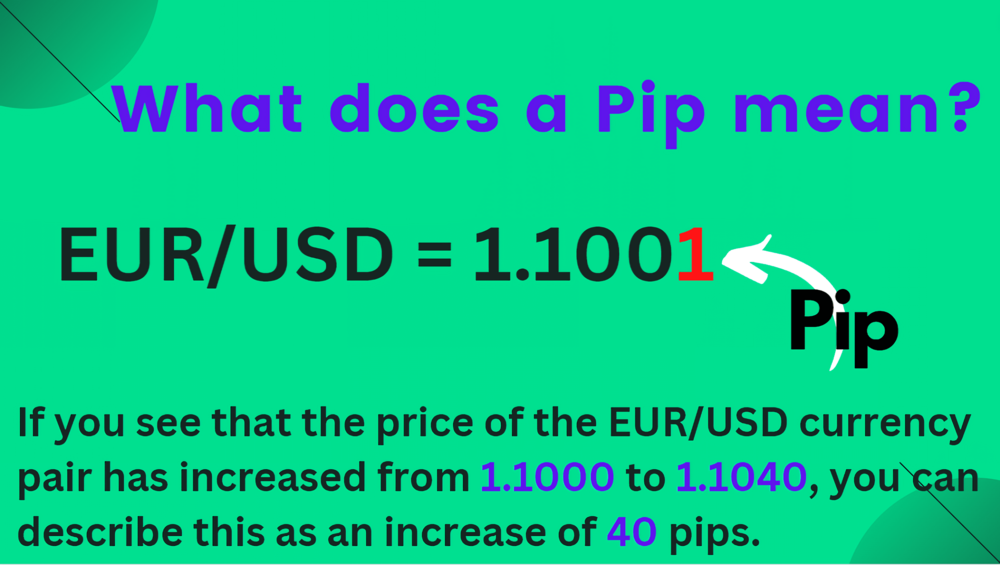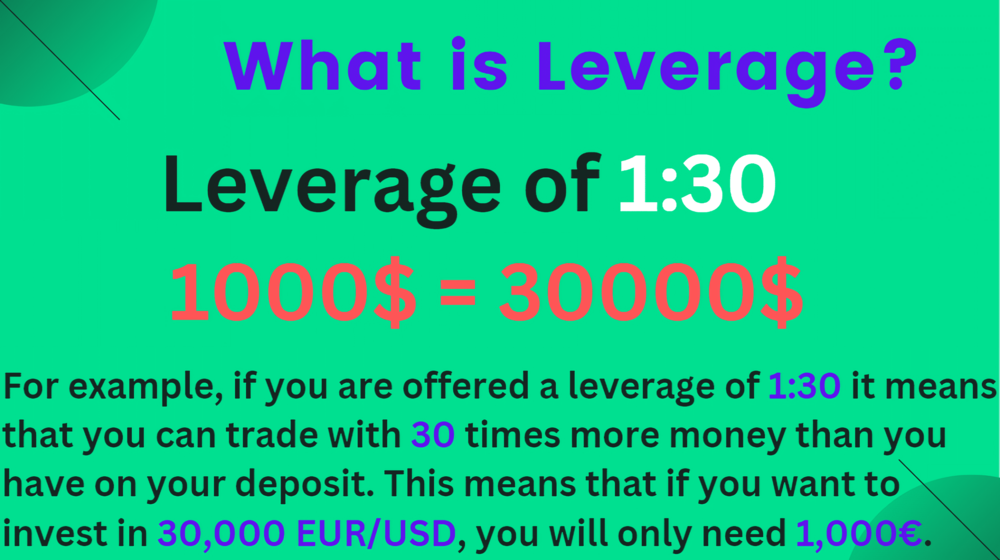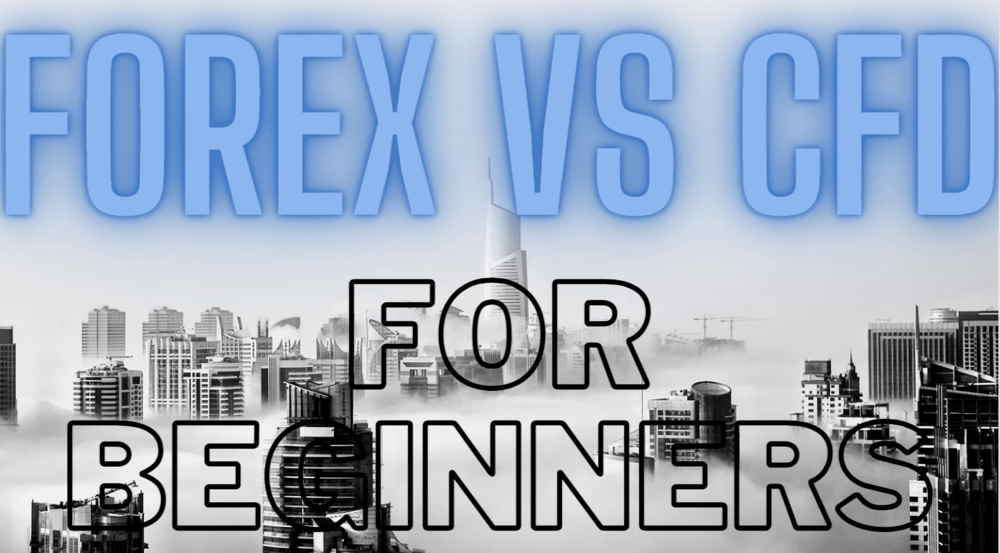Learn how to online trade. Guide for beginners CFDs vs. Forex.
Get a free 50,000€ Demo Account in 2 minutes!
What is Forex? What is CFDs?
What is foreign exchange market: Forex?
The term foreign exchange trading - also known as Forex, currency exchange or under the abbreviation "FX" - refers to transactions between currencies.
Today, the foreign exchange market is considered the most important market in the world, with over $5 trillion worth of currencies traded every day. The volumes of all the world's stock markets combined do not even come close to this figure.
The price of each currency fluctuates depending on its demand relative to other currencies. In other words, the more more in demand a particular currency is, the higher its rate will be, and vice versa. And if you have access to a decentralized currency marketplace, you can trade all major world currencies. You will deal with a large number of of market participants, from the world's largest financial institutions that conduct large monetary transactions to ordinary people exchanging a few dollars here and there. But they all have the same goal - they either to buy a currency and then sell it for more money than they paid, or to sell a currency and then sell it for less money currency and then buy it back for less money.
What is a CFD?
CFD stands for Contract for Difference, a derivative product used to exchange the difference in value of an underlying asset. CFDs are time-limited contracts that derive their value from the market performance of assets assets, which may be currency pairs or other assets (stocks, indices, commodities, cryptocurrencies etc.). Since CFD trading is a popular form of derivatives trading, you do not buy the assets themselves, which is why we use the term "underlying asset".
In the case of a CFD trade on EUR/GBP, for example, you do not own these currencies. Instead, you trade only the rising or falling rate within a certain time period. As a rule, the term of such a contract extends over a relatively short period of time.
How does trading CFDs work?
As mentioned above, trading CFDs allows you to speculate on the rise and fall of rapidly financial markets (or financial instruments), such as stocks, indices, commodities, currencies and other liquid liquid assets. But we haven't explained how trading works yet.When you enter into a CFD trade, you buy or sell a number of units of your chosen financial instrument, depending on the direction you think the price will move in the future. If you believe that the price of the underlying asset will rise, you enter into a long trade. If you believe that the If you think that the price of the underlying asset will go down, you enter a short trade.
For every point the price of the underlying asset moves in the expected direction, you gain a multiple of the number of CFD units you previously bought or sold. If the the price moves in the opposite direction than expected, you make a loss. In the case of CFDs on currency pairs, a long position means that you buy the base currency and are effectively short on the reference currency.
The price will go up if the base currency strengthens or the counter currency weakens. You will profit if you close the position at a higher rate (this would be the best scenario and is not and is not guaranteed).
When you open a short position, you sell the base currency and buy the reference currency. The rate will fall, if the base currency weakens or the counter currency strengthens. You can make a profit by closing the position at a closing the position at a lower rate (but even this scenario cannot be guaranteed).
It is also worth mentioning that CFDs belong to a group of derivative financial products that allow the use of leverage. However, traders should have a certain amount of experience in using levers before trying CFDs, as gains or losses can significantly exceed the amount invested.
Buying a CFD on a currency pair?
Example:
You want to buy CFD units for EUR/GBP (0.8370/0.8380) worth €10,000 and expect the underlying to will rise. Let's assume that the broker has a margin rate of 3.25% for EUR/GBP. So you have to put 3.25% of the total position value as margin to be able to open the trade.
In this example your margin is £272.19 (3.25% * (10,000 * 0.8375)) = £272.19
If the price rises by 30 points in the next hour you earn 30£
(10.000£ * 0,0030 = 30£)
Assuming the rate falls by 30 points, you lose £30
Selling a CFD on a currency pair?
Example:
In this case, you expect the rate of EUR/USD (1.0660/1.0670) to fall. So you want to sell CFD units worth 10,000€.
The broker has a margin rate of 3.34% for the EUR/USD currency pair, in this trade your margin is $356.21 (3.34% * (10,000 * 1.0665)) = $356.21.
If the price falls by 40 points, you earn $40. If the rate rises by 40 points, you lose $40.
How does forex work?
The purpose of currency trading is to speculate on changes in the value of one currency in relation to another. speculate. You can do this by buying a currency and then selling it at a higher rate, or by by selling it first and then buying it back at a lower rate.
To understand how this works in practice, you need to know what exactly a currency pair is. Currencies are valued in relation to other currencies. If you buy euros (EUR), the rate you pay depends on whether you buy whether you exchange US dollars (USD), British pounds (GBP) or another currency for these euros.
A currency pair consists of a base currency and a counter or reference currency. The base currency is the first currency in the quoted rate, while the counter currency is the second. The counter currency is the reference currency, in which the base currency is quoted.
Let's take an example of EUR/USD which is quoted at 1.1014-1.1016. In this example, the EURO is the base currency and the USD is the reference currency. The rate of the euro is quoted in USD. So you would pay 1.1016 USD to buy 1 Euro to buy. If you wanted to sell 1 Euro, you would receive 1.1014 USD.
In most pairs, the most liquid currency is usually quoted first. However, if the USD is quoted with the British Pound, the Euro, the New Zealand Dollar or the Australian Dollar, the USD will be quoted second.
If the base currency is a foreign currency, the quotation is called a direct quotation. If the base currency is the national currency, the quotation is called an indirect quotation.
Currency pairs are divided into three categories:
The most frequently traded currency pairs in the world are called majors. These include EUR/USD, USD/JPY, GBP/USD, AUD/USD, USD/CHF, NZD/USD and USD/CAD. You will notice that these pairs all contain the USD. Currency pairs that contain two of the above currencies but not the USD are called minor currency pairs (minors). These pairs are also called cross currency pairs or crosses. Examples are EUR/GBP, AUD/JPY and GBP/CAD.
Exotic currency pairs include one major currency and one other. The second currency is usually the currency of an emerging of an emerging market country such as Turkey, Thailand or South Africa. However, exotic currencies also include the currencies of fairly developed countries such as Singapore and Hong Kong. An important aspect of currency trading is liquidity. If two countries have a healthy trading relationship, the currency pair should be very liquid with the two respective currencies. On the other hand, a currency pair that contains the currencies of two countries that do not have a trading relationship may be illiquid.
Major and minor currency pairs are the most frequently traded due to their high liquidity. These pairs can be traded with any time horizon to be traded as the spread is tight. Exotic pairs can be traded, but require larger price movements to cover the trading costs. This means that you will need a high level of volatility or a longer longer time frame.
2 Trading Plattforms for beginners
The terms in forex trading and trading forex CFDs
What does spread mean in forex and CFDs trading?
In short, spread is the difference between the selling price and the buying price. In most financial markets, there are three prices: the market price, the buy price and the sell price.The term Spread refers to the difference between the offer (or sell) price and the demand (or buy) price and is used for all assets and their derivatives.
Example of spread calculation:
Let's say the selling rate for EUR/USD is 1.100. If you want to buy $1, you have to pay $1.10. If you think that the EUR will rise against the USD, you should buy that in the future you will be able to sell your 1€ for a higher amount than you paid for it.
If the selling rate for EUR/USD is 1.300, you could sell 1€ at this price. However, it is only advisable to sell if you think that the rate of the EUR will fall against the US dollar. Because then you could buy back the same euro for less than the $1.30 you paid when you opened the position.
If you think that the rate of the EUR will fall against the dollar is advisable to sell. Then you could buy back the same Euro for less than the $1.10 you paid when you sold.
So what is a Lot?
How to calculate Lot sizes and position size?
One of the most confusing aspects of Forex trading and trading Forex CFDs is calculating the size of a position. The size of a position in the market, depends on the price traded, the lot size and the number of lots.
A lot is the standardized trading size for currencies. One lot is equal to 100,000 units of the base currency. So, if you buy 1 lot of EUR/USD at 1.1017, you will buy 100,000 EUR, while you will have to pay 110,170 USD.
You can also trade other lots:
Nano lots are equal to 100 units of the base currency.
Micro lots are 1,000 units of the base currency
Mini lots are 10,000 units of the base currency
What is Leverage?
In the case of forex trading, leverage means that with a small amount of capital on your deposit, you can move a larger amount on the market.
For example, if you are offered a leverage of 1:30, it means that you can trade with 30 times more money than you have on your deposit. This means that if you want to invest in 30,000 EUR/USD, you will only need 1,000€. Leverage usage is associated with much higher risk. If you use a leverage of 1:30, then your losses will be multiplied by a factor of 30.
Advantages of using leverage
Increase of capital efficiency
If it takes a few days to earn 200€ with positions without leverage, with leverage it takes a much shorter time to achieve the same result. This means that your capital can be reinvested more often when you have profitable trades.
Increasing the profit potential
The most important benefit of trading with leverage is that it provides the opportunity to earn more when the market moves in your favor.
Compensates for low volatility
Another advantage of leverage, especially in forex trading, is that it compensates for low volatility. As volatile markets move in larger cycles, this can be beneficial.
Disadvantages of using leverage
Increasing the risk on your portfolio
Leveraged positions are not limited to the amount of your trade and the balance in your trading account. So, your broker can lock your trading balance until you make the required margin.
Increase of potential losses
Similarly, the impact of the trade is increased if it makes losses. So, there is a possibility that you will lose more than you originally deposited.
Incur more fees
Credit fees and margin are incurred, which can eat up your profits, if you make any at all.

What does a Pip mean?
A pip - short for point in percent - is a small measure of the change in price of a currency pair. It can be expressed either in terms of the quoted price or in terms of the underlying currency. A pip is a standardized unit and represents the smallest amount by which the price of a currency can change.
If you see that the price of the EUR/USD currency pair has increased from 1.1000 to 1.1040, you can describe this as an increase of 40 pips.
The actual profit or loss you receive depends on the amount of currency you bought. If you buy micro lots (1,000 units) and trade with an account denominated in US dollars, the pip value is $0.1. So if your profit/loss was 40 pips, it means that you won/ lost $4. If you bought mini-lots (one unit of 10,000), the pip value increases/decreases to 1$, so your profit/loss is 40$. Similarly, if you bought a standard lot (100,000 units): The pip value increases/decreases to 10$, which corresponds to a profit/loss of 400$.
Long positions and short positions: Bulls vs. Bears
The terms "Bull" and "Bear" are used to refer to the two types of traders.
Bull traders are optimistic and expect prices to rise, which is why they open long positions. A long position in the Forex CFD markets refers to buying a currency pair in the hope that its price will rise.
Bear traders, on the other hand, are pessimistic and expect prices to fall, so they opt for short positions. In forex CFDs, short positions are opened when the trader sells a currency pair or a contract for the pair in the hope that the price will fall.
Trading strategies for Forex and CFDs
Traders use analysis, news, market sentiments and algorithms.
Technical analysis looks at the price action of the pair. Price patterns, indicators, and support and resistance levels are used to identify potential entry points.
Fundamental analysis looks at the differences between the economies of two countries and how these can affect the relative strength of each currency. These include interest rates, the money supply, and trade balances.
Scalping strategies make predictions for short-term price movements that can last seconds or minutes.
Day traders use technical analysis to identify trades that they can hold for minutes to hours. They close all positions at the end of the day.
Swing traders hold positions for a few days in hopes of larger price swings.
Position traders and trend followers hold their positions for up to a few years. They follow larger trends or price patterns.
Advantages and disadvantages of trading CFDs and Forex?
Advantages of trading CFDs
Access to assets that are not available in your region
CFDs allow exposure to various markets around the world, even if direct trading is not allowed in your region. Global exposure and diversity are not loopholes, but rather enjoyable features.
Wide range of markets
CFDs offer the possibility to trade on different financial markets from one account. Many brokers specializing in these instruments offer CFDs on currencies, stocks from different markets around the world, as well as other types of financial instruments such as gold, silver, oil, stock indices, sectors, commodities, government bonds, currencies, etc. This allows traders to diversify and hedge.
Flexibility
Traders can hold their positions as long as they want: CFDs do not have a set maturity date. There is also no fixed contract size, which means that traders can work with volumes of any size.
Extended trading hours
Many brokers offer their clients extended trading hours, which means that they can work with certain instruments or markets, such as the FTSE and the Dow, even if the underlying market is closed for the day.
Disadvantages of trading CFDs
Risk of excessive trading activity
Because CFDs have lower barriers to entry (i.e., lower capital investment) compared to some underlying assets, traders may tend to trade too much. This can lead to reckless decisions and larger losses.
Varying Liquidity
CFD prices directly reflect what is happening in the underlying market. So, if you choose an asset with low liquidity, the instrument will not change that.
No ownership
Traders can own the contract but not the asset, which may mean giving up the benefits that come with ownership. This is less relevant for currencies, but very important for assets such as stocks and indexes.
Advantages of foreign exchange trading
Difficult to manipulate
The foreign exchange market is so large that no single entity can control the market rate over an extended period of time.
High liquidity
The foreign exchange market is the most liquid market in the world with over $5 trillion worth of trading volume. This means that you can open and close more positions than in other, less liquid markets.
24-hour availability
The forex market is open 24 hours a day, 5 days a week, so you don't have to time your trades as precisely as you do with stocks.
Low volatility
There are fewer variables that affect the difference in rates between two currencies.
Disadvantages of forex trading
Gaps on weekends
Since forex markets are traded 24 hours a day, forex traders do not have to worry about the nightly gaps that occur in other markets. However, forex markets are closed on weekends, which can cause gaps in prices. Forex traders should be careful when holding positions over the weekend.
Market Risks
All trading instruments are subject to numerous market risks. Political, economic and geopolitical factors can contribute to increased volatility that can make trading difficult and unprofitable.
Regulatory Risks
Forex brokers are regulated by various regulatory bodies, depending on the country in which the broker is located. Traders should always make sure that their broker is licensed by a reputable regulatory body.
Counterparty Risks
Foreign exchange is not traded on central exchanges like stocks and other instruments. As a result, trading is less monitored and traders may not be protected in the event of a broker's insolvency.
How to learn how to trade CFDs and Forex?
You can start with a free demo account, and the more you practice, the easier new trading markets will be for you. Some of the most important lesson you will learn is your reaction when you make money and when you lose money. Switching to a live account makes sense after you have experienced the ups and downs with a demo account.
There are numerous instructional videos and articles on trading Forex and CFDs on our website.
To improve your trading, you can read books on technical and fundamental analysis, strategies and more. It is also worth learning about economics and monetary policy, because they affect the currency value.
To start the learning process more systematically and efficiently, if possible, you should start keeping a diary where you set goals and track your progress.
Trading Plattform for beginners
How to start trading Forex or CFDs on Forex?
Regardless of where you stand in the CFD vs. Forex decision, you should keep this in mind:
Traders who have little or no experience with Forex or CFDs on Forex should choose currency pairs with high trading volumes. Generally, these are the currencies of the world's largest economies, such as the United States, the European Union, the United Kingdom, Japan and Switzerland.
Set a schedule for trading. The optimal time to trade is when volume is highest. This usually coincides with the opening and closing times of trading on the major currency exchanges, such as New York, London, and Tokyo.
Use technical analysis. This type of analysis uses charts to study current price trends and anticipate future trends.
Track any economic events that may affect your assets/underlyings. Currencies can be affected by, among other things, the release of macroeconomic data from major global economies and economic decisions made by their central banks. Knowing about these types of developments can tell you a lot about the strength or weakness of your currencies.
If you are going to use leverage, do it properly. For example, you need to set a stop loss, which is a manageable loss for each trade. This way, you can avoid some of the losses by closing a position that didn't perform as expected.
Forex or CFD: which should you choose?
When it comes to Forex vs CFD trading, there is no clear answer as to which instrument is better. They have many differences on a technical level, but also many similarities. Before you choose either way, you should read up on both and practice with both to get the most realistic trading experience possible. You may understand how certain instruments work on paper, but have a very different idea of them when you see them in action.
Trading in highly liquid markets and with highly liquid instruments is usually a good way to start trading. So if you are a beginner, it is better to trade forex pairs or CFDs on liquid instruments. But other than that, there are no clear guidelines to follow. You have to try to find the type of instrument that best suits your personality, skills, capital, risk tolerance and goals.
It is not uncommon for traders to work with multiple instruments at the same time. So you may not have to choose between Forex and CFDs at all. You may find a way to take advantage of their benefits and minimize their drawbacks. But remember that no matter which instruments you choose, you cannot escape the risk of losses.
Setting up a Free Demo Account in 2 minutes!
Once you have a demo account, you can practice by choosing currency pairs or CFDs and opening virtual trades. As you learn new strategies, you will become more prepared to trade with real money. However, when you get into real trading, remember that even experienced traders suffer losses, and you should always use appropriate risk and money management strategies.
Forex - Foreign exchange market Wikipedia
CFDs - Contract for difference Wikipedia




No comments yet